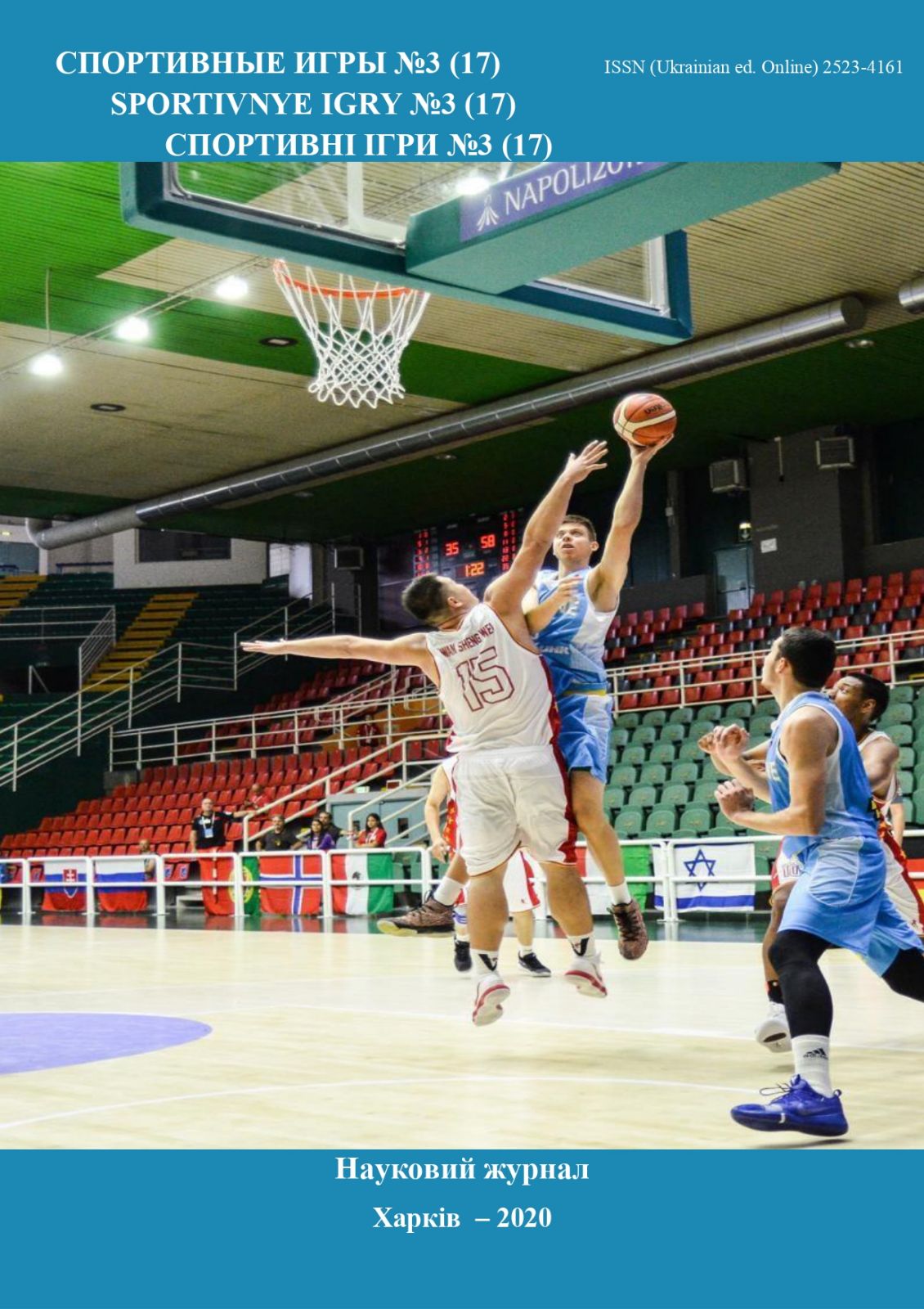Features of gender similarities and differences among athletes who specialize in sports games
DOI:
https://doi.org/10.15391/si.2020-3.10Keywords:
sports games, gender, masculinity, femininity, androgyny, biological sex, gender similarity, gender differencesAbstract
Purpose: identify the gender characteristics of male and female
athletes who specialize in sports games. Material and methods: 194 male students and female
students involved in sports games and have various sports qualifications, aged 17-26 years, took
part in the study. Such research methods were used as: S. Bem's “Masculinity / Femininity”
technique and Kettell's 16-factor questionnaire; methods of mathematical statistics.Results. We
examined and analyzed a group of sportgames in terms of their influence on the formation of a
gender type and revealed gender similarities and gender differences among male and female
athletes who specialize in various sports games. The subjects were 113 maleathletes and 81
femaleathletes. Among young men, the ratio of masculine and androgynous personalities is 60%:
40%, respectively.Girls - 59%: 41%. The largest number of masculine-type athletes were recorded
in volleyball (85%), and female athletes in handball (82%) and basketball (71%). Table tennis does
not contribute to the masculinization of either male athletes or femaleathletes. This type of sport is
dominated by personalities of the androgynous type - boys (70%), girls (60%). The similarities and
differences of masculine and androgynous male and female athletes with respect to their personal
qualities are established.Conclusions. In sports games there are more male athletes (60%) and
female athletes (59%) of the masculine type than the androgynous type. No feminine boys and girls
were identified as a result of the study. Sports games contribute to the masculinization of both boys
and girls.Training activities and high sports qualifications of athletes (56%) and athletes (66%)
contribute to the formation of their masculine personality type. When analyzing the personal
qualities of masculine and androgynous boys and masculine and androgynous girls, more
similarities were found between them than differences. The athletes did not reveal any differences at
all. And among athletes, differences are observed only in two factors: “susceptibility to feelings -
high normative behavior” and “conservatism - radicalism”.
References
Артамонова, Т.В., & Шевченко, Т.А. (2009). Гендерная идентификация в спорте. Монография; Волгоград : ФГОУ ВПО «ВГАФК».
Баранова, А.В. (2017a). Личностные особенности спортсменок в традиционно мужских видах спорта. Зборнік навуковых прац акадэміі паслядыпломнай адукацыі, 15, 30-41.
Баранова, А.В. (2017b). Психологические механизмы маскулинизации спортсменок. Рудиковские чтения. Материалы XIII Международной научно-практической конференции психологов физической культуры и спорта 11-12 мая 2017 г. Москва, 112-115.
Босенко, Ю.М., Харитонова, И.В., Роспопова, А.С., & Стоянова, Ж.А. (2018). Гендерные особенности личностных свойств спортсменов, занимающихся тяжёлой атлетикой. Вестник Костромского государственного университета. Серия: Педагогика. Психология. Социокинетика, 24 (4), 266-270.
Ворожбитова, А.Л. (2007). Гендерная теория физической культуры как основа формирования гендерного сознания спортсменов. Вестник Ставропольского государственного университета, 49, 27-31.
Дамадаева, А.С. (2010). Влияние занятий спортом на гендерные характеристики личности женщин. Ученые записки университета им. П. Ф. Лесгафта, 3 (61), 45-47.
Дамадаева, А.С. (2010). Влияние спорта на психологические особенности мужчин и женщин. Теория и методика спорта высших достижений, 6, 3-6.
Дементьева, И.М. (2017). Гендерные различия гандболистов юношеского возраста как фактор их социализации и адаптации. Вестник АГУ, 3 (203), 126-131.
Ильин, Е.П. (2010). Пол и гендер. СПб.: Питер.
Клёцина, С.И. (2009). Гендерная психология. СПб.: ООО «Питер Пресс».
Маскаева, Т.Ю., & Германов Г.Н. (2014). Гендерные психические и поведенческие особенности женщин и их проявление как результат занятий различными видами спорта. Ученые записки университета имени П.Ф. Лесгафта, 12 (118), 266-272.
Речкалов, А.В., Речкалова, О.Л. (2017). Влияние занятий спортом на психологические особенности личности. Известия высших учебных заведений, 1, 104-109.
Тарасевич, О.А., & Камаєв, О.І. (2019). Особливості гендерних відмінностей у спортсменів, що займаються спортивними єдиноборствами. Единоборства, 4 (14), 117-126.
Цикунова, Н.С. (2003). Гендерные характеристики личности спортсменов в маскулинных и фемининных видах спорта. Дисс... канд. психол. наук. Санкт-Петербург.
Шахов, Ш.К., & Дамадаева, А.С. (2011). Спорт как фактор формирования психологического пола личности. Вестник спортивной науки, 6, 16-18.
Bem, S.L. (1979). Theory and measurement of androgyny. Journal of Personal and Social Psychology, 37, 1047-1054.
Colker, R. (1980). Correlates of female athletic: masculinity, femininity, selfesteem and attitudes toward women. Sex Roles, 6, 47-58.
Lamont-Mills, Andrea (1998). Sex. Gender and gender identity in sport. The Inaugural Wendy EY Women in sport Essay Prize: Exploring Perceptions of Sex, Gender and Gender Identity in Australian Sport. Retrieved from URL https://eprints.usq.edu.au/18052/1/Lamont-Mills.pdf
Lantz, C.D., & Schroeder, P.J. (1999). Endorsement of masculine and feminine gender roles: differences between participation and identification with the athletic role. Journal of Sport Behavior, 22, 545-557.
Matteo, S. (1986). The effect of sex and gender-schematic processing on sport participation. Sex Roles, 15, 356-371.













